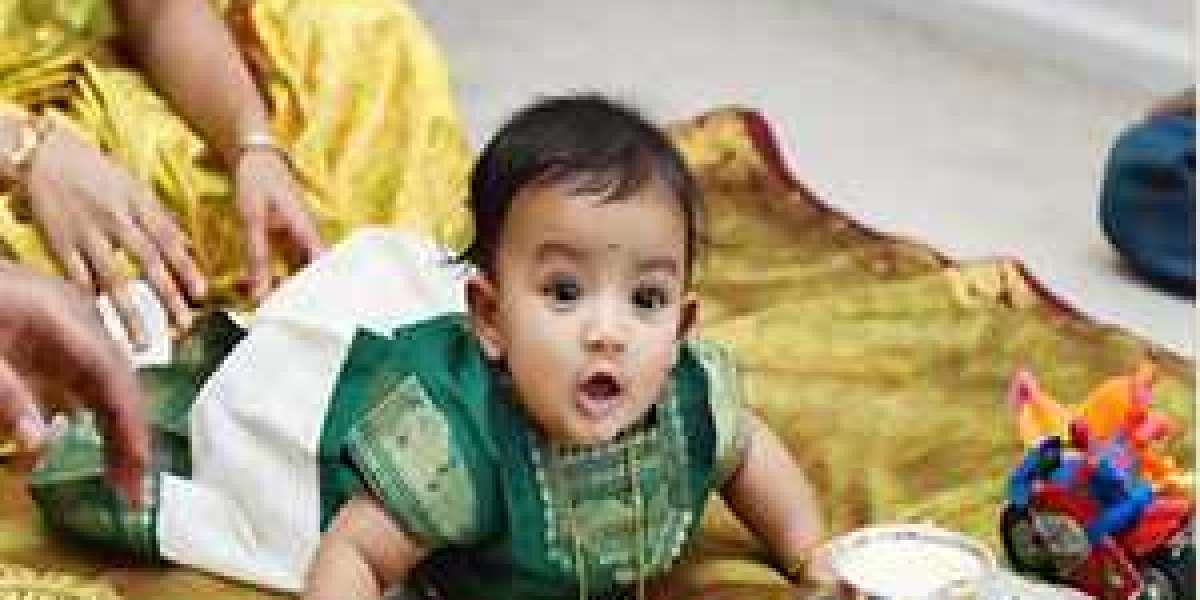Introducing solids to a baby's diet is a significant milestone in their growth and development. In many cultures, this joyous occasion is celebrated with great enthusiasm and reverence. One such celebration is Annaprashan, a sacred ceremony that marks the initiation of a baby into the world of solid foods. This article delves into the cultural, religious, and symbolic aspects of Annaprashan, exploring its significance and the rituals associated with this special event.
Understanding Annaprashan Ceremony:
Annaprashan, also known as Mukhe Bhaat or Rice Ceremony, has its origins deeply rooted in Hindu traditions. The word "Annaprashan" is derived from Sanskrit, where "Anna" means food, and "Prashan" refers to the act of feeding. This ceremony is believed to have been influenced by the ancient Vedic practices, emphasizing the importance of nourishment and the transition from breastfeeding or bottle-feeding to solid foods.
The Rituals of Annaprashan:
Annaprashan is typically performed when the baby reaches the age of six months, as it is believed that their digestive system becomes ready to process solid food at this stage. Prior to the ceremony, preparations are made to ensure a smooth and auspicious event. The family consults with a priest to choose an auspicious date and time for the ceremony, following the principles of astrology and the family's religious beliefs.
On the day of Annaprashan, the venue is beautifully decorated, usually the family's home or a temple. Family and friends are invited to witness and partake in the celebration. An important aspect of Annaprashan is the naming ceremony associated with it. The baby is given a name, often chosen based on the family's traditions or religious beliefs, and this name is announced during the ceremony.
During the rituals, a priest guides the family through various customs and chants religious hymns to invoke the blessings of the deities. The baby is dressed in traditional attire and seated on a special seat, facing east or north, which are considered auspicious directions. The priest then performs a puja, offering prayers and seeking divine blessings for the baby's health, well-being, and prosperity.
The symbolic act of feeding the baby his or her first solid food holds great significance in Annaprashan. The baby's mother or an elder family member feeds a small amount of cooked rice or a sweet dish, such as kheer (rice pudding), to the baby. This act symbolizes the introduction of solid food into the baby's diet and marks the beginning of their journey towards a more diverse and nourishing diet.
Family members play an important role in Annaprashan. They shower the baby with blessings, gifts, and well-wishes for a healthy and prosperous life. The occasion is filled with joy, laughter, and a sense of togetherness as loved ones come together to celebrate this important milestone in the baby's life.
Annaprashan in Different Cultures:
While Annaprashan is primarily associated with Hindu traditions, similar ceremonies are celebrated in different cultures around the world. In South India, a ceremony called "Vidyarambham" is performed to initiate a child into the world of learning and education. In this ceremony, the child is made to write their first letters in a tray of rice or sand, symbolizing their initiation into the world of knowledge.
Conclusion:
Annaprashan is a sacred and joyous celebration that marks the introduction of solid food to a baby's diet. This ceremony holds cultural and religious significance, emphasizing the importance of nourishment, family, and tradition. The occasion of Annaprashan not only signifies a physical milestone but also serves as a reminder of the spiritual and cultural values that are passed down through generations.
As the baby takes their first steps towards exploring new flavors and textures, Annaprashan becomes a beautiful opportunity for families to come together and celebrate this momentous occasion. It is a time of joy, gratitude, and hope for the baby's future. The ceremony reinforces the bond between the baby, their family, and the community, as everyone gathers to bless and support the child on their journey of growth.
In different regions and communities, Annaprashan may have variations in customs and rituals. For example, in Bengali traditions, the ceremony is known as "Mukhe Bhaat" or "Khoyon," where the baby is fed a mixture of sweetened rice and yogurt from a silver bowl. In some South Indian communities, a symbolic gesture of feeding the baby a gold ring, a book, or a pen is included in the ceremony to signify prosperity, knowledge, and success in life.
Annaprashan not only celebrates the physical act of introducing solid food but also carries deep cultural and religious significance. It is believed that by following the customs and rituals of Annaprashan, the baby receives blessings from the deities and the ancestors. The ceremony serves as a way to express gratitude to the divine for providing sustenance and nourishment.
Furthermore, Annaprashan reinforces the cultural identity and traditions of the family. Through the selection of an auspicious date and time, the involvement of a priest, and the performance of religious rituals, the family upholds their cultural heritage and passes it on to the younger generation. It becomes an opportunity for parents to teach their child about their roots, customs, and values.
The joy of Annaprashan extends beyond the immediate family, as relatives, friends, and well-wishers join in the celebration. It is a time of camaraderie and sharing, where guests bring gifts, blessings, and good wishes for the baby's well-being. The presence of loved ones further enriches the ceremony, making it a memorable and cherished event for all.
In conclusion, Annaprashan is a sacred celebration that introduces a baby to the world of solid foods. It encompasses cultural, religious, and familial aspects, making it a significant milestone in the baby's life. The ceremony not only emphasizes nourishment but also fosters a sense of belonging, cultural identity, and community support. Annaprashan is a joyful occasion filled with love, blessings, and the hope for a bright future as the baby embarks on their culinary journey.








